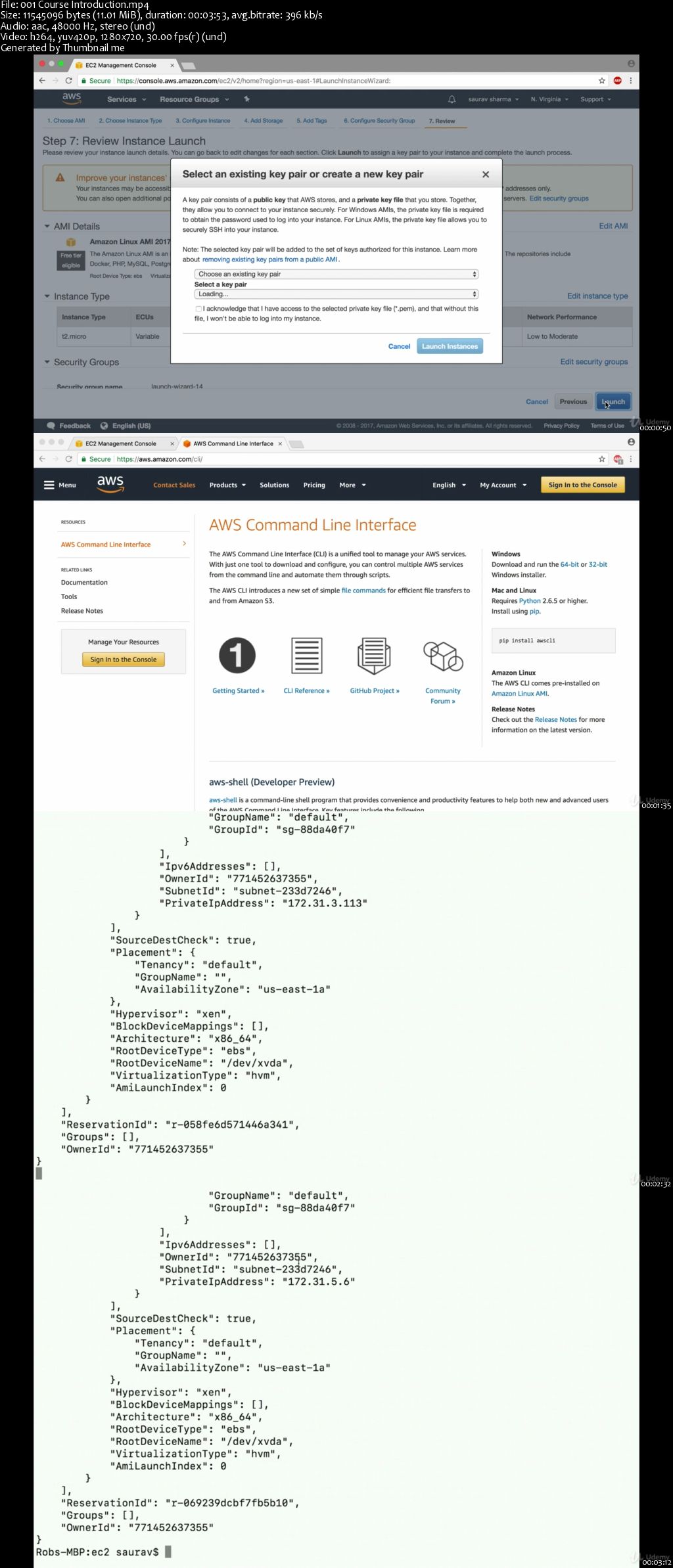
Genre: eLearning | Language: English
Use the Command Line to Deploy/Modify/Manage/Automate infrastructure on AWS.
– AWS S3 Server Side Encryption lessons added. This included SSE-S3, SSE-KMS and SSE-C( not available via the AWS console)
– AWS KMS key creating with the CLI
About the Course:
This course is designed to help students/ developers get started with the AWS Command Line Interface.(CLI). If you access AWS only with the AWS console, then you will get a chance to learn a completely new way to use and interact with AWS. Using the command line interface is one of the must haves skill for an AWS developer.
The AWS Command Line Interface (CLI) is a unified tool to manage your AWS services. With just one tool to download and configure, you can control multiple AWS services from the command line and automate your infrastructure through scripts.
You should be ready to manage and automate your AWS infrastructure using the CLI after this course. You will learn 1 more way to deploy/manage/destroy infrastructure and services on AWS. This will make your workflow much more faster and efficient.
Learning the command line will give you another perspective on the AWS services and may even shed light on concepts that you are unclear with. The AWS developer associate exam objective mentions ” Ability to use the AWS service APIs, AWS Command Line Interface (CLI), and software developer kits (SDKs) to write applications” Learning the command line is one of the big aspects of the AWS DevOps Pro exam as well.
In this course , We will go over things like:
Create access keys to use with the AWS CLI
Install and setup the CLI on your local machine
Create a VPC with the CLI.
Create EC2 instance, view running instances, filter attributes.
Copy files to and from S3 buckets. Sync local folders with automated cron jobs.
Create lambda functions and invoke them using CLI
Deploy CloudFormation stacks with the CLI
After this course you can begin making calls to your AWS services from the command line like:
$aws ec2 describe-instances
$aws s3 ls
$aws s3 sync . s3://mybucketname
$ aws ec2 stop-instances –instance-ids i-123abcdefg
and more advanced things like creating Lambda functions, creating CloudFormation stacks etc.

Download nitroflare
http://nitroflare.com/view/CACA2CE4BF1BD2F/Introduction_to_the_AWS_Command_Line_Interface_%28CLI%29.part1.rar
http://nitroflare.com/view/9A31B844A1AF61D/Introduction_to_the_AWS_Command_Line_Interface_%28CLI%29.part2.rar
http://nitroflare.com/view/097708D5DA02F13/Introduction_to_the_AWS_Command_Line_Interface_%28CLI%29.part3.rar
Download 百度云
你是VIP 1个月(1 month)赞助会员,
转载请注明:0daytown » Introduction to the AWS Command Line Interface (CLI)